Arranging six pictures into a narrative sequence is a story of its own, something I have covered here. But there is also a world beyond the six image narrative. If a six image narrative is a short story, this might be something more akin to a novella, or a novel.
Combining elements of several six image narratives into something bigger, I am now almost done with a 64 image sequence entitled Bright Lights, Black City. In this post, I would like to share how I went from small building blocks to a larger story. To avoid getting too theoretical, I would like to discuss some examples.
When I set out for this adventure, I realized I found it more suitable for my story telling to capture ‘a moment’ or a specific part of the action not in one but in three images: Tiny pieces of a larger story that are stories themselves because after all, they have a beginning, a middle part, and an end. (They also had the advantage that any two trios could be combined into a six image narrative to be shared here. When I started this project by the end of 2019, I called these combinations of small pieces Noir Suites.)
Let me start with a sequence of three I made at the beginning of this journey (in January 2020).
A lady breaks into the detective’s office and gets caught by the gumshoe.
Though stylistically these photos are not quite in line with the other picures in the series, I liked them, and still do. Therefore, I tried to integrate them into the larger story from the onset. I moved these three pictures around quite a bit, until I decided they made most sense immediately following the three factory pictures to the right.
The detective, after following his client to a factory, observes three men apparently beating up a fourth guy.
The link to the burglary sequence is supposed to be temporal. The office scene happens after the factory scene, maybe later that same night.
Even if this makes sense, a huge gap lingers between the three factory pictures and the subsequent three burglary pictures. There’s not only a shift in perspective but we also find ourselves in a new location: How did the detective get there?
This is the central question of my aforementioned post about building a six image narrative. It’s the question of getting from situation A to situation B. We can now see that it does not really matter if a situation (or moment) is defined by a single picture or a multitude of pictures. In both cases, we want narrative to bridge the gap, to explain what’s happening.
Let’s build this bridge with words first: After the three guys leave, the detective maybe enters the factory building to find the victim severly injured or even killed. (I might photograph this scene in a way that leaves the decision to you.) Later, the detective may call the police, face the police, talk to an officer while some paramedics hurry inside. After that, the detective returns to his office. He might ride his motorcycle, enter a building, climb the stairs – and then surprise the burglar. Something like that. I usually just need a vague idea.
As words do not translate into pictures very accurately, there were slight changes when I made the pictures shown to the right in May 2021, but (I hope) you can see that the basic idea is still there: The detective searches the factory and finds the victim, talks to the police while the paramedics arrive, then rides his bike away.
And in the next three pictures he has left the scene of the crime. He now enters his building. He climbs the stairs. He switches on the lights in his office and leaves the door ajar…
…which is not what the story was supposed to be!
Something had to be done! However, I did not really want to re-shoot the sequence because those staircase pictures are far from simple. In the end, I decided to alter the sequence, hoping I could convey a sense of cross cuts: The dectective enters his builing. The door is already open while he climbs the stairs. Back in the office, he catches the burglar red-handed.
To sum it up: I hope I could show some strategies for telling stories with pictures. Since I intended to show and tell, this post now requires a lot of scrolling – sorry for that and thank you for staying with me till the end!
In order to avoid making this post longer than necessary, I chose not to share the entire sequence I finally came up with. However, in an act of shameless self-promotion, let me say you can find it embedded into the context of Bright Lights, Black City!







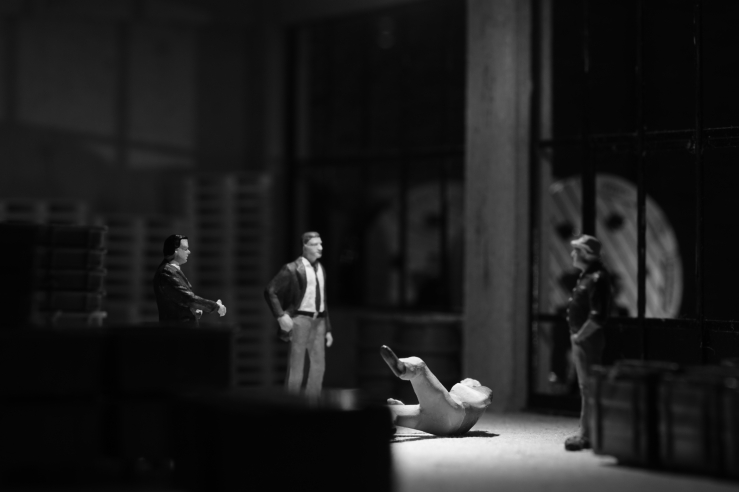



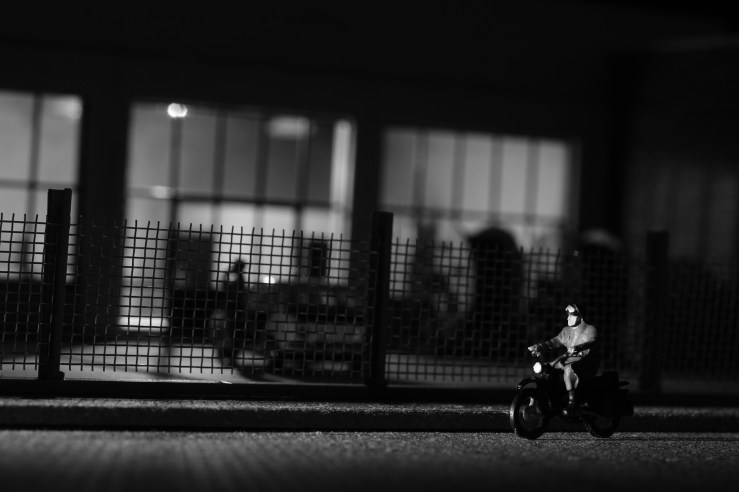




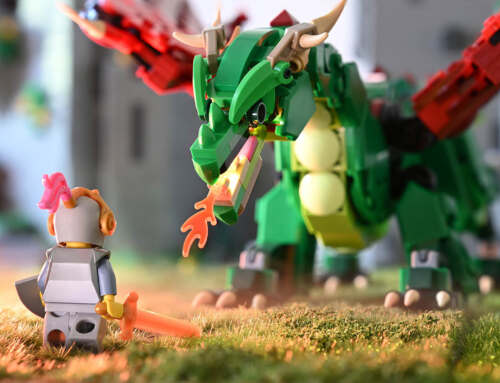
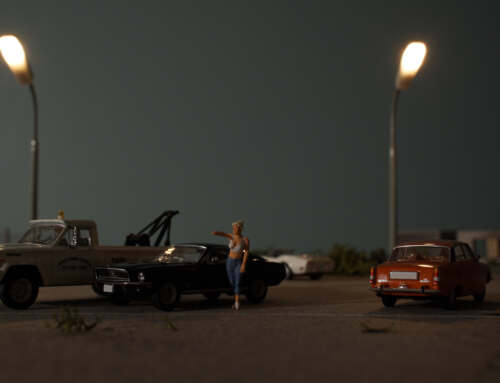
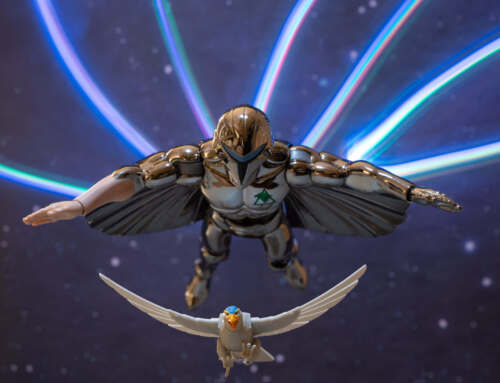
Leave A Comment